Mad Hedge Biotech and Healthcare Letter
November 15, 2022
Fiat Lux
Featured Trade:
(A FAIL-SAFE PASSIVE INCOME BIOTECH)
(AMGN), (AZN)
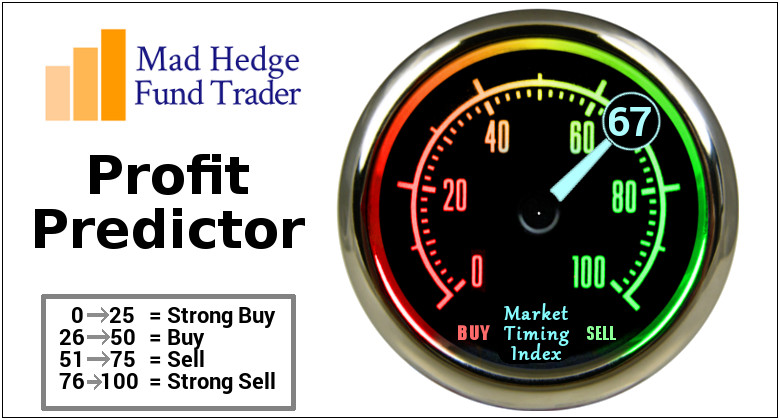
Mad Hedge Biotech and Healthcare Letter
November 15, 2022
Fiat Lux
Featured Trade:
(A FAIL-SAFE PASSIVE INCOME BIOTECH)
(AMGN), (AZN)

Loading up on high-quality stocks, particularly those that deliver passive income, is an excellent strategy to ride out this bearish market. This all but guarantees a dependable cash flow and offers a way for investors to limit losses.
Obviously, blue chip stocks tend to be among the first businesses to rally after marketwide crashes.
Among the top-tier passive income stocks in the biotechnology and healthcare industry, one of the names that stand out is Amgen (AMGN).
This blue chip biopharmaceutical business prides itself on consistent free cash flow and a solid track record of boosting its dividends on a regular basis.
So far this year, Amgen’s shares have climbed by an impressive 30.6%. This led to the biotech’s stock rising and surpassing its 52-week highs. For a bit of background, the S&P 500 has declined by 20.3% to date, while the Nasdaq Composite has fallen by a disappointing 32.9%.
Clearly, Amgen’s shares are beating the broader market this year.
Moreover, the company is currently trading at $291 per share, breaking through a resistance level set at a high 250s earlier in 2022.
A key reason for Amgen’s ability to defy this challenging bear market is its strategy to focus on the business of developing and selling critical, life-saving treatments.
One of the most exciting drugs in its portfolio is AMG-133, which is a new obesity drug. This is estimated to enter Phase 2 trials by 2023, with shareholders anticipating approval soon since the drug’s latest data showed “impressive efficacy.”
In terms of sales opportunity, AMG-133 can target a lucrative sector. The total market for this drug is estimated to be worth over $10 billion every year. This would translate to a multibillion-dollar revenue stream for Amgen.
Another promising drug in Amgen’s portfolio is asthma medication Tezspire, which it developed with AstraZeneca (AZN). This treatment holds considerable potential, showing off a 300% growth from its first-quarter sales to record $29 million in revenue in the second quarter.
So, even if some products, such as the white blood cell treatment Neulasta, tend to weigh on the company’s top line, Amgen still manages to generate massive free cash flow every quarter and annually.
To illustrate this point, Amgen’s free cash flow in the third quarter of 2022 reached a whopping $2.8 billion. Meanwhile, the company’s sales hit $6.65 billion, beating analysts' expectations, while its earnings per share were at $4.70
What does this imply?
It means Amgen is an ultra-safe passive income investment. The biotech’s substantial free cash flow can easily cover its annual dividend yield of 2.88%.
Since it first started distributing quarterly dividends back in 2011, Amgen has boosted it annually.
The company’s management has been consistent in its commitment to boost the dividend yield, rewarding shareholders with a jaw-dropping 1,257% increase over the last 10 years.
In 2022, Amgen announced a 10% increase in its dividend to reach $1.94 per share. At its current figure, Amgen’s yield is 3.08%. That’s almost double the S&P 500 average dividend yield of 1.82%.
More importantly, Amgen has a slew of new drugs that look incredibly promising. As of the last update, there are 40 candidates queued for Phase 2 and 3 trials.
This is crucial because several existing drugs in its portfolio are anticipated to experience a decline in sales over the following years due to patent exclusivity losses and the entry of more competitors.
All in all, Amgen is proving itself to be quite the recession-proof biotech thanks to its stellar free cash flow and heavily dependable dividend program. Needless to say, it is an excellent stock to own, particularly in a brutal bear market.
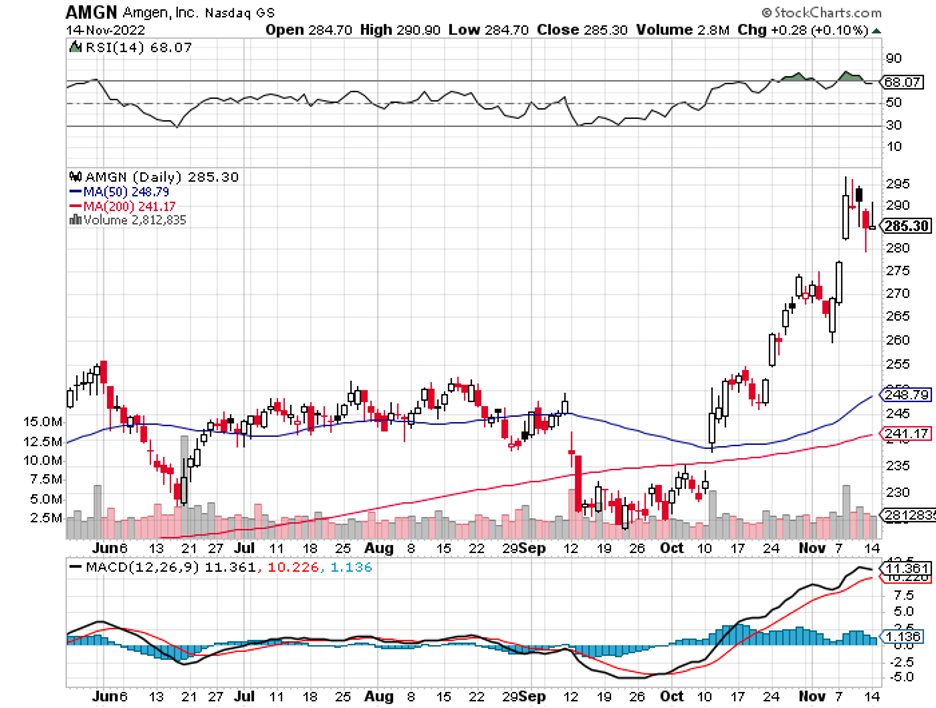
Global Market Comments
November 3, 2022
Fiat Lux
Featured Trade:
(LONG TERM PORTFOLIO UPDATE)
(BMY), (AMGN), (CRSP), (LLY), (EEM), (BABA),
(GOOGL), (AAPL), (AMZN), (SQ), (TBT), (JNK), (JPM),
(BAC), (MS), (GS), (FXA), (FXC), (SLV)

Mad Hedge Biotech and Healthcare Letter
November 1, 2022
Fiat Lux
Featured Trade:
(BARGAIN DEAL FOR A QUALITY STOCK)
(ABBV), (ABT), (RGNX), (JNJ), (MRK), (GILD), (AMGN), (LLY), (BMY), (PFE)
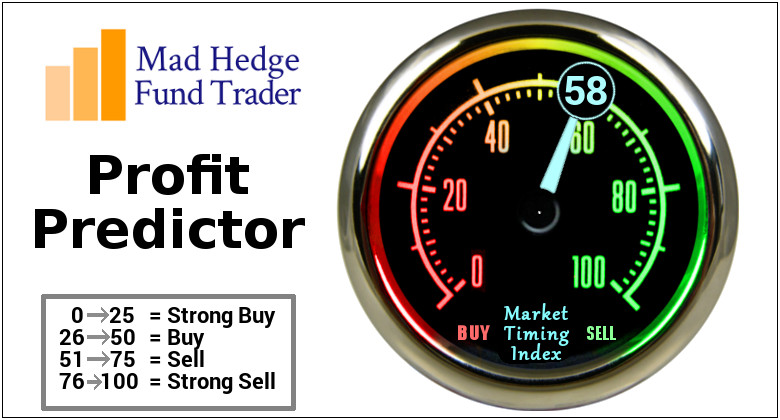
Uncertainty. That’s the prevalent sentiment in the investment community these days.
Investors have been hesitant to buy stocks because they believe the bear market isn’t over yet.
Moreover, investors are anxious over the possibility that the stocks will keep falling as issues like higher inflation continue to hound the market.
However, it’s critical to remember that although today’s situation is challenging, it’s only temporary. This means that businesses with solid track records and promising prospects still make excellent buys.
One of the companies outperforming the market this year but which has fallen out of investors’ favor recently, is AbbVie (ABBV).
AbbVie stock has been declining in value lately following an underwhelming third-quarter earnings report. On top of that, the looming patent expiration of its top-selling drug Humira remains a significant concern among investors.
While the Humira situation is clearly not good news for the company, the reality is that AbbVie has impressively preserved the medication’s exclusivity for almost a decade longer than initially expected. Plus, the company has been boosting Humira pricing every year to cope with the declining revenues in the EU, where it already lost patent protection in 2018.
Hence, it’s acceptable for Humira’s chapter in AbbVie’s story to end. After all, the drug has given the company so much. It has been primarily responsible for the more than 325% climb in the company’s share price since 2012 when AbbVie was spun out of Abbott Laboratories (ABT).
Nonetheless, Humira’s impending patent loss doesn’t mean that AbbVie will simply abandon its roots.
The company has since developed potential successors of Humira, namely, Skyrizi and Rinvoq.
So far, the two auto-immune drugs have delivered promising results and are on track to keep the company in tip-top shape in its post-Humira era.
These newer immunology drugs are showing impressive growth potential, with Rinvoq recording a 56% increase in revenue in the third quarter of 2022 and Skyrizi revenue soaring by 85%.
Both are also on track to beat Humira’s peak sales, with joint peak sales from Skyrizi and Rinvoq initially estimated to reach roughly $15 billion.
However, recent revenue reports show that the two could surpass the estimate and completely eclipse Humira’s more than $20 billion annual return.
Obviously, AbbVie would require more than its immunology segment if it plans to sustain a good top and bottom-line growth trajectory.
Other than the more than 10 neuroscience, hematology, immunology, and oncology candidates in its pipeline, which are projected to be ready for market launches in the three to five years, AbbVie has been diving into the aesthetics and eye care markets.
Its eye care program, specifically RGX-314, which is currently being developed in partnership with Regenxbio (RGNX), is an interesting wildcard. For context, the eye care segments for wet and dry advanced macular degeneration are roughly worth over $10 billion to $20 billion annually.
With its Humira chapter closing, AbbVie could be ushering in a new era where products from its Allergan acquisition take the lead.
For example, its Botox franchise consistently delivers impressive results. Even its Botox for migraine line has been recording double-digit revenue growth in the third quarter, indicating gains in AbbVie’s neuroscience segment.
As for the aesthetic indications of Botox, this particular portfolio could be a key driver in the company’s future growth.
Aside from Botox, AbbVie also gained access to the widely used dermal filler Juvederm. With the facial aesthetics industry pegged to experience a compound annual growth rate yearly at 14%, the market is estimated to hit $15.2 billion by 2028.
This trend of AbbVie dominating the market is likely to continue as the company is confident that competitors would be unable to develop biosimilars of Botox. That means its Botox line could keep adding to its top-line growth for an extended period.
Overall, AbbVie is a solid bet among the “Big 8” in the pharmaceutical world, which includes Johnson & Johnson (JNJ), Merck (MRK), Gilead Sciences (GILD), Amgen (AMGN), Eli Lilly (LLY), Bristol Myers Squibb (BMY), and Pfizer (PFE).
Moreover, this is an excellent time to hunt for deals as several quality stocks continue to decline, affected negatively partly by the momentum of the broader market. Among stocks to consider, AbbVie should be at the top of your list.
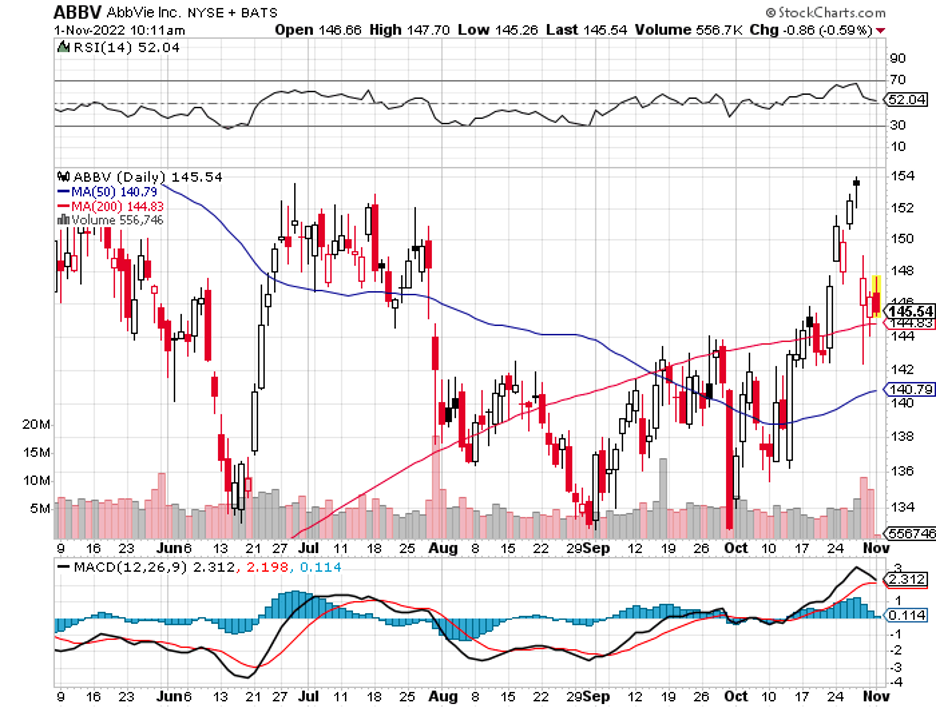
Mad Hedge Biotech and Healthcare Letter
October 27, 2022
Fiat Lux
Featured Trade:
(A HIDDEN TREASURE IN THESE TURBULENT TIMES)
(BMY), (AMGN)
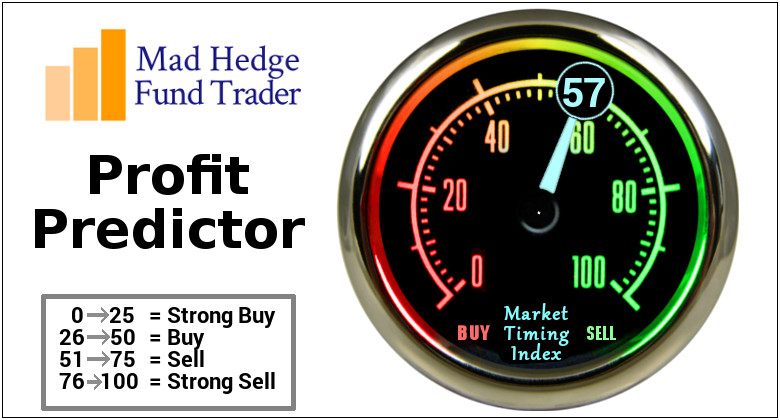
Biotechnology and healthcare companies are not exactly the thrilling investments that tech stocks or other growth-centered businesses tend to be described as.
Nonetheless, one of the reasons I find this sector attractive is that the companies can offer steady growth in extensively diverse markets.
From biopharmaceutical treatments to household items, the products these businesses develop are the kinds people tend to need and use regularly constantly.
While the biotechnology and healthcare sector doesn’t always beat the general market, the combo of steady growth, resilient returns, and reliable dividends generally make it an incredibly attractive option for investors.
Among the companies in this segment, one of the names you can buy and hold in the long run is Bristol Myers Squibb (BMY).
BMY is hailed as the seventh-biggest biopharmaceutical company across the globe in terms of sales. In 2021, the business recorded $46.4 billion in total revenue, which was up by 9% from 2020.
More than half of BMY’s revenue last year was generated from sales of three of its best-selling treatments: multiple myeloma drug Revlimid, Eliquis, and cancer treatment Opdivo.
The full-year revenue for all three drugs jumped that year, with Revlimid climbing by 6% to reach $12.8 billion, blood thinning medication Eliquis rising by 17% to hit $10.8 billion, and Opdivo increasing by 8% to record $7.5 billion.
Despite the impressive performance of these top-selling products, BMY has been diversifying its portfolio to cover a vast lineup of candidates in the fields of immunology, hematology, and, of course, oncology.
The healthcare giant has also grown, in part, through acquisitions, and part of its 2021 revenue of $46 billion, which was twice more than its 2018 revenue of $23 billion, came from these efforts. Moreover, BMY has reported a free cash flow of roughly $13 billion for two consecutive years.
In 2022, BMY reported a lackluster third-quarter performance. While the company’s revenue slid by 3% to $11.2 billion, the stock still climbed 2.31%.
This could be attributed to the fact that BMY managed to beat expectations as analysts predicted a more significant drop due to foreign exchange impacts.
Aside from these, Revlimid has been dealing with increased competition worldwide in the past months. Specifically, this bone marrow cancer drug has been facing “generic erosion” thanks to the emergence of cheaper alternatives in the market.
Picking up the slack from Revlimid is Eliquis, which has become the company’s top performer in terms of revenue and projected growth. Sales for this drug rose by 10% in the third quarter to reach $2.66 billion.
Meanwhile, sales of BMY’s newly launched products jumped 61% to record $553 million.
Future growth is anticipated to be led by Sotyktu, an oral drug for moderate to severe plaque psoriasis that recently gained FDA approval.
In the US alone, roughly 7.5 million individuals suffer from psoriasis. This is a promising market for BMY, which has been aggressively searching for products to rejuvenate its portfolio.
Since it was only recently approved, Sotyktu’s contribution to BMY’s revenue has yet to be proven. However, the drug recorded better results than Amgen’s (AMGN) blockbuster drug Otezla, which raked in $2.25 billion in sales in 2021.
Given the released data, target market, and more promising results from Sotyktu, BMY’s drug is estimated to reach peak sales at $4.2 billion by 2028.
Overall, BMY is an excellent bet during these turbulent times. In the past 10 years, the company has generated total returns, including dividends, of 190%.
This isn’t far from the 223% returns recorded by the S&P 500. Moreover, if BMY sustains its recent performance, then it’s only a matter of time before it successfully shrinks that gap. I suggest that long-term investors buy the dip.
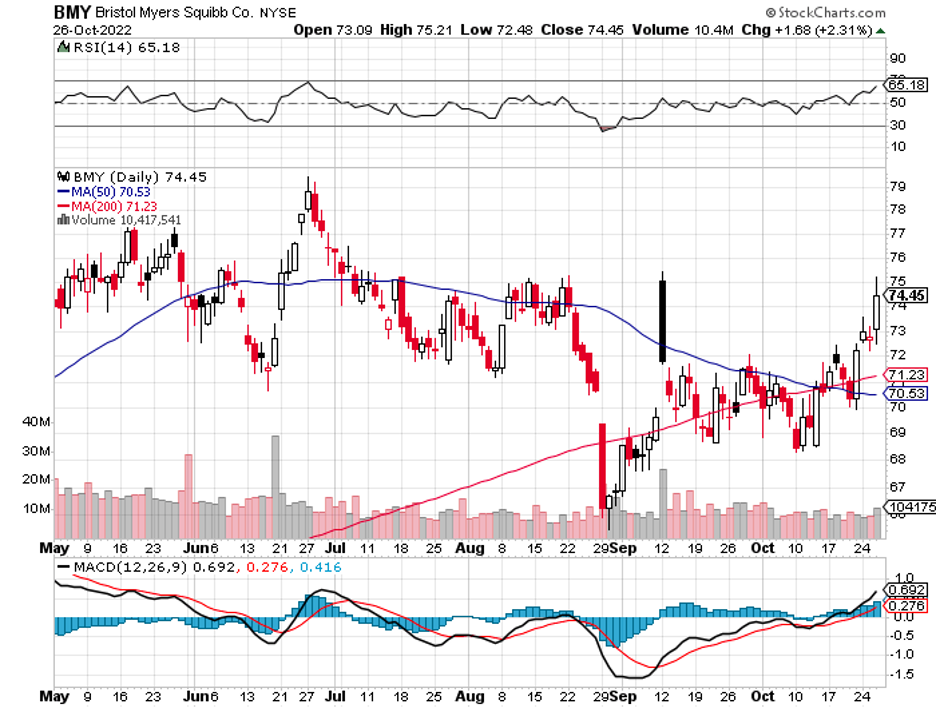
Mad Hedge Biotech and Healthcare Letter
October 13, 2022
Fiat Lux
Featured Trade:
(A SAFE BET IN A VOLATILE MARKET)
(AMGN), (NVO), (LLY)

The biotechnology and healthcare industry is fraught with risk. However, it’s also brimming with opportunities.
On the one hand, a new drug takes years of clinical research. On top of that, the average cost to bring each product to the market reached $1 billion between 2009 and 2018.
On the other hand, the chosen few that receive the green light from the FDA more often than not deliver on their promise to become blockbusters, raking in sales of over $1 billion every year.
This arguably justifies the risks that come with the industry.
Amgen (AMGN) has become the recent embodiment of this promise. Despite the volatility of the market in the past months, the company remains a strong player thanks to several factors that could bolster its share price.
In particular, Amgen investors are looking forward to potential gains courtesy of the pipeline of drugs slated for market release over the medium term.
The most exciting among them is its obesity drug AMG 133.
The positive data from AMG 133’s unveiling had experts excited over the drug, with many expecting it to become a multi-billion dollar revenue stream for Amgen.
As expected, Amgen will be facing stiff competition in this market, specifically between 2025 and 2030.
To date, investors have been closely monitoring the obesity segment, with two companies clearly leading the charge: Novo Nordisk (NVO) and Eli Lilly (LLY).
Novo Nordisk markets Wegovy, which is a shot that targets obesity by zeroing in on the glucagon-like peptide receptor, or GLP-1. This is also the same target for many diabetes treatments.
Meanwhile, Eli Lilly is working to integrate obesity as part of the conditions treated by its recently approved diabetes drug Mounjaro. Like Wegovy, this drug also targets GLP-1.
What makes it more potent is that it also targets glucose-dependent insulinotropic polypeptides or GIP. Both GLP-1 and GIP are hormones linked to blood sugar control.
What makes AMG 133 different from other approved and experimental treatments for obesity is that it blocks not only a particular hormone but also a specific protein involved in controlling blood sugar.
While it targets GLP-1, Amgen’s candidate works on a gut protein linked to digestion, called the gastric inhibitory polypeptide receptor, or GIPR.
The obesity market is a lucrative space since the medical world now categorizes obesity as a type of chronic illness instead of a mere consequence of lifestyle choices.
That is, obesity drugs are on the cusp of entering the mainstream primary health care system.
An apparent precedent for this opportunity is the high blood pressure sector, initially a nascent segment in the 1980s and eventually skyrocketed to a $30 billion industry by the 1990s.
In 2022, the obesity market is estimated to be worth $2.4 billion. By 2030, this space is projected to reach $54 billion.
That places all competitors in the same space, Amgen, Eli Lilly, and Novo Nordisk, in excellent positions. In fact, Novo Nordisk has been dealing with shortages of Wegovy due to rising demand.
While any upgrade or downgrade prompted by a single drug’s potential, or even multiple treatments’ potential, is exciting, it should be taken with a grain of salt.
The biotechnology and healthcare industry is continuously in flux, and any company in the sector is one major failed trial or one rival’s success away from facing trouble. Simply put, they tend to be volatile.
Amgen is not an exception to this harsh truth despite the company’s solid obesity prospects and impressive portfolio and pipeline. That means investors expecting an immediate payout following the recent developments might get disappointed.
Nonetheless, it’s also vital to remember that biotechnology and healthcare stocks tend to deliver better results than the broader market even amid the economic turmoil.
These companies seem to operate and function outside typical economic cycles, providing investors with dependable performance when most businesses are struggling.
Amgen is one of the biggest biotechnology companies in the world. It has been one of the pioneers in this segment since the 1980s. It’s also a part of the prestigious Dow 30 list of companies.
Moreover, it has a massive and diversified product portfolio, with nine treatments that individually generate more than $1 billion in sales annually.
These drugs are not only huge sellers, but also offer wide margins because of the existing restrictive and high barriers to entering the biotech world.
Hence, this enables Amgen to enjoy a remarkable pricing power and autonomy over its products while still growing its top line at a steady pace.
If you’re looking for a conservative and attractive long-term investment, then buying Amgen when the price drops wouldn’t be a bad bet.
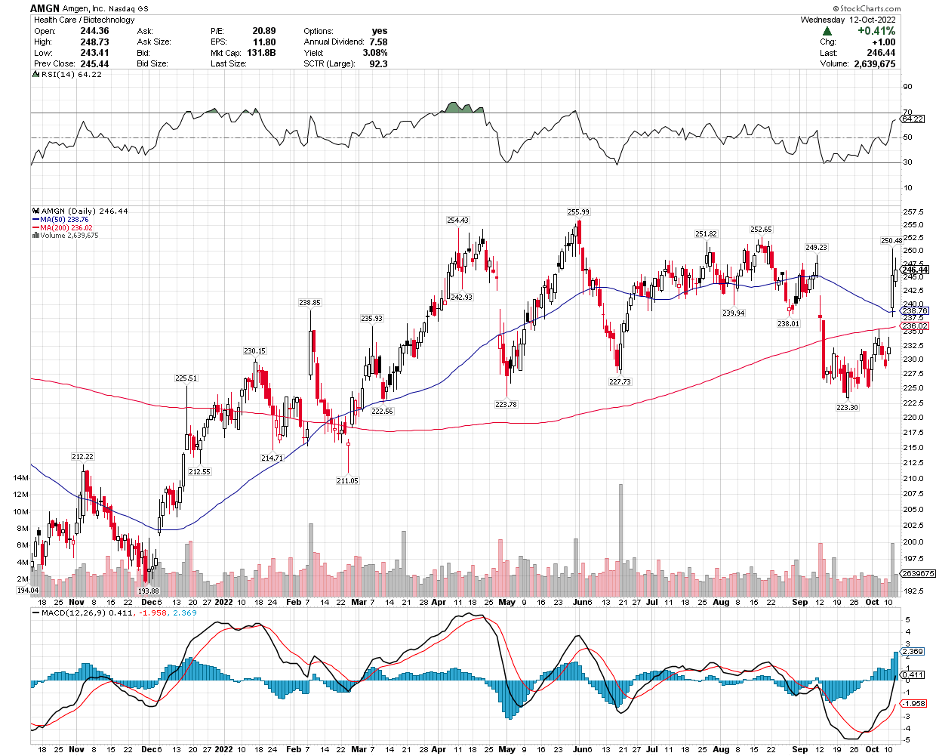
Mad Hedge Biotech and Healthcare Letter
September 27, 2022
Fiat Lux
Featured Trade:
(LAST CHANCE AT SALVATION)
(BIIB), (ESALY), (RHHBY), (LLY), (NVS), (AMGN), (REGN), (BMY), (ABBV), (MRK), (PFE)

Legal Disclaimer
There is a very high degree of risk involved in trading. Past results are not indicative of future returns. MadHedgeFundTrader.com and all individuals affiliated with this site assume no responsibilities for your trading and investment results. The indicators, strategies, columns, articles and all other features are for educational purposes only and should not be construed as investment advice. Information for futures trading observations are obtained from sources believed to be reliable, but we do not warrant its completeness or accuracy, or warrant any results from the use of the information. Your use of the trading observations is entirely at your own risk and it is your sole responsibility to evaluate the accuracy, completeness and usefulness of the information. You must assess the risk of any trade with your broker and make your own independent decisions regarding any securities mentioned herein. Affiliates of MadHedgeFundTrader.com may have a position or effect transactions in the securities described herein (or options thereon) and/or otherwise employ trading strategies that may be consistent or inconsistent with the provided strategies.
This site uses cookies. By continuing to browse the site, you are agreeing to our use of cookies.
OKLearn moreWe may request cookies to be set on your device. We use cookies to let us know when you visit our websites, how you interact with us, to enrich your user experience, and to customize your relationship with our website.
Click on the different category headings to find out more. You can also change some of your preferences. Note that blocking some types of cookies may impact your experience on our websites and the services we are able to offer.
These cookies are strictly necessary to provide you with services available through our website and to use some of its features.
Because these cookies are strictly necessary to deliver the website, refuseing them will have impact how our site functions. You always can block or delete cookies by changing your browser settings and force blocking all cookies on this website. But this will always prompt you to accept/refuse cookies when revisiting our site.
We fully respect if you want to refuse cookies but to avoid asking you again and again kindly allow us to store a cookie for that. You are free to opt out any time or opt in for other cookies to get a better experience. If you refuse cookies we will remove all set cookies in our domain.
We provide you with a list of stored cookies on your computer in our domain so you can check what we stored. Due to security reasons we are not able to show or modify cookies from other domains. You can check these in your browser security settings.
These cookies collect information that is used either in aggregate form to help us understand how our website is being used or how effective our marketing campaigns are, or to help us customize our website and application for you in order to enhance your experience.
If you do not want that we track your visist to our site you can disable tracking in your browser here:
We also use different external services like Google Webfonts, Google Maps, and external Video providers. Since these providers may collect personal data like your IP address we allow you to block them here. Please be aware that this might heavily reduce the functionality and appearance of our site. Changes will take effect once you reload the page.
Google Webfont Settings:
Google Map Settings:
Vimeo and Youtube video embeds:
